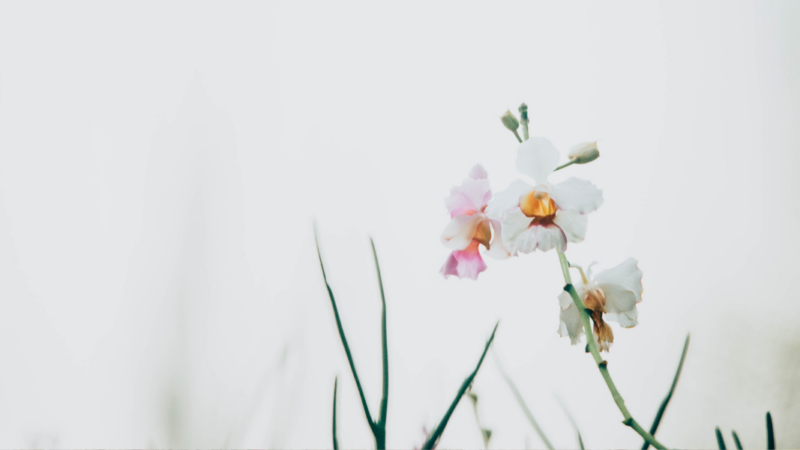Release emotional baggage and reclaim your joy
If you or someone you know suffers from any form of depression—from feeling exhausted or blue to not being able to get out of bed—I am excited to share something with you that can offer a new approach to this huge challenge facing so many people today. Depression happens on a “spectrum” and can have a huge impact on our daily lives. I see depression as the literal depression of self—a side effect of being buried under the sometimes-overwhelming thing called “life.”
In my latest book, How To Heal Yourself From Depression When No One Else Can, I’m bringing my tried-and-true methods to one of the greatest challenges of our time.
My work has helped thousands of people overcome emotional and physical challenges when nothing else has worked. Today I want to share with you one technique that we use in several different ways together in the new book: The Sweep Technique.
The Sweep Technique is a script that you repeat in order to clear subconscious blocks and beliefs. It can be done by simply reading the script out loud or in your head a few times in a row.
The Sweep Script
Even though I have this _______ (describe what you want to release such as “feeling depressed and fatigued”), I acknowledge it’s no longer working for me.
I give my subconscious full permission to help me clear it, from all of my cells in all of my body, permanently and completely.
I am now free to thank it for serving me in the past.
I am now free to release all resistances to letting it go.
I am now free to release all ideas that I need this in order to stay safe.
I am now free to release all ideas that I need it for any reason.
I am now free to release all feelings that I don’t deserve to release it.
I am now free to release all conscious and subconscious causes for this energy.
I am now free to release all conscious and subconscious reasons for holding on to it.
I am now free to release all harmful patterns, emotions, and memories connected to it.
I am now free to release all generational or past-life energies keeping it stuck.
All of my being is healing and clearing this energy now, including any stress response stored in my cells.
Healing, healing, healing. Clearing, clearing, clearing.
It is now time to install _______ (insert a new, healthy energy such as “the energy of moving forward,” “the feeling of being content,” or “the belief that I can feel better now”).
Installing, installing, installing. Installing, installing, installing. And so it is done.
If you’d like to join me for more healing in the new book, I will walk you through using more of this technique, along with others—to release emotional baggage, reconnect with yourself, and reclaim your joy.
Love,
Amy B. Scher
This originally appeared as an author letter by Amy B. Scher, author of How to Heal Yourself From Depression When No One Else Can: A Self-Guided Program to Stop Feeling Like Sh*t.
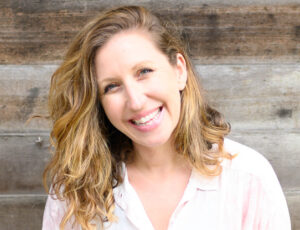
Amy B. Scher is an energy therapist, expert in mind-body healing, and the bestselling author of How to Heal Yourself When No One Else Can and How to Heal Yourself from Anxiety When No One Else Can. She has been featured in the Times of India, CNN, HuffPost, CBS, the Washington Post, Cosmopolitan, the Los Angeles Review of Books, Curve magazine, and San Francisco Book Review. Scher was also named one of the Advocate’s “40 Under 40.” She lives in New York City. For more, visit amybscher.com.
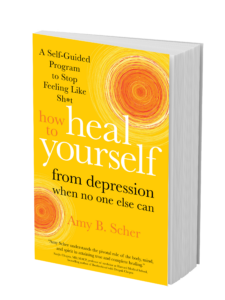
Learn More
Sounds True | Amazon | Barnes & Noble | Indiebound | Bookshop
The Courage to Stand Alone
The Courage to Stand Alone
It can be scary when we are called to confront our aloneness, the seemingly infinite depths of that empty, homeless feeling inside of us. When all our old protections fall away and the abandoned and neglected ones inside come begging for our love and attention. It can feel sometimes as though there’s nowhere to turn, like we want to crawl out of our own skin, urgently get out of the Now and into some other time or place.
It takes bravery to stop, breathe, and—slowly, slowly, slowly—turn back toward the lonely, dark, empty “void” inside (in reality, there is no void). To actually turn to face the sense of abandonment buried deep within our guts, to soften into the sense of separation that has been with us for as long as we can remember. We don’t have to make the feeling go away today, only lean into it, breathe into it, begin to make room for it, maybe even learn to trust its presence.
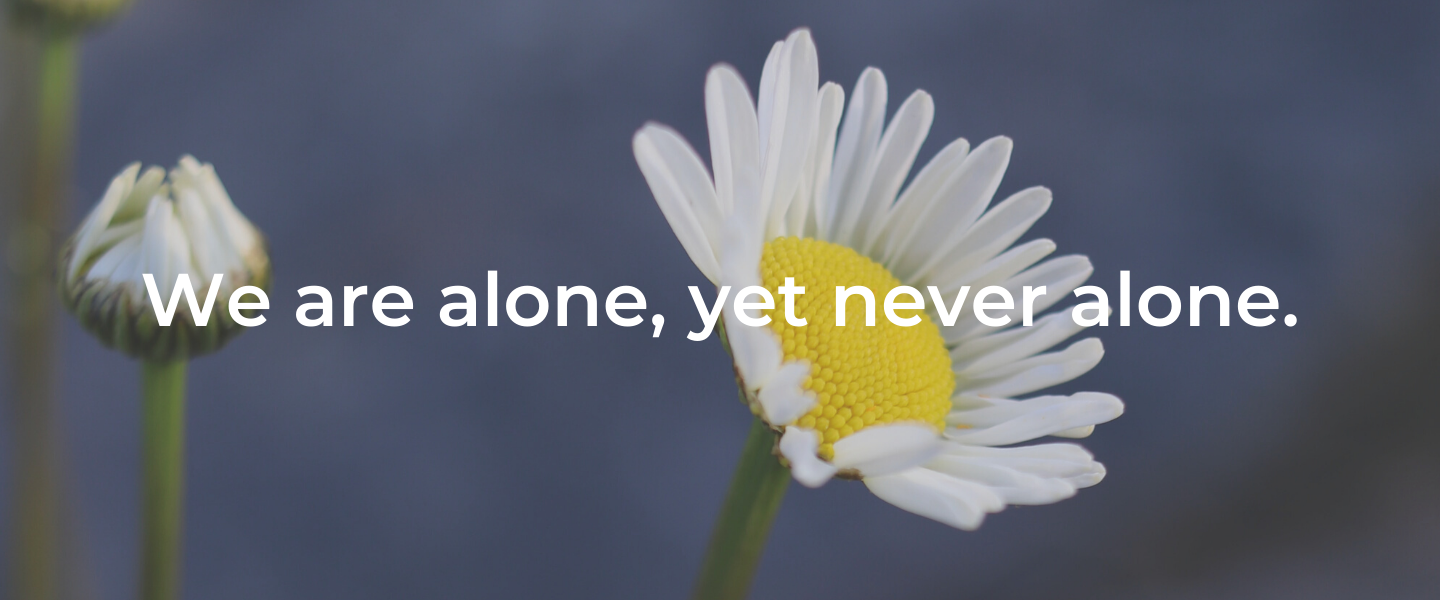
Perhaps loneliness is like a cosmic nostalgia, a preverbal memory of a deep womb-connection, with ourselves, with the planet, with every being who has ever lived. In leaning into our own loneliness, shame, and existential anxiety, we may be able to touch into compassion for the loneliness of every human being, for every heart longing to connect, for every grieving heart, every frightened heart.
We are alone, yet never alone. This is the great paradox of existence. Our loneliness, when not resisted or numbed away, may actually end up connecting us more deeply to life and each other, like it did for me and my sweet father that winter evening.
Let us learn to be alone, then! Alone, without distraction, which is true meditation. Alone, communing with the breath as it rises and falls. Alone with the mind and its incredible dance. Alone with the rain and the morning sun. Alone with the crackle of autumn leaves under our feet, or the crunch of winter snow. Alone with the hopes and joys and anxieties of this human form, living a single day on this remarkable planet. Alone with our precious selves, with this unfathomable sense of connection to all things, with birth and loss and death and their myriad mysteries.
Alone, with all of life.
This is an excerpt from You Were Never Broken: Poems to Save Your Life by Jeff Foster.
 Jeff Foster shares from his own awakened experience a way out of seeking fulfillment in the future and into the acceptance of “all this, here and now.” He studied astrophysics at Cambridge University. Following a period of depression and physical illness, he embarked on an intensive spiritual search that came to an end with the discovery that life itself was what he had always been seeking.
Jeff Foster shares from his own awakened experience a way out of seeking fulfillment in the future and into the acceptance of “all this, here and now.” He studied astrophysics at Cambridge University. Following a period of depression and physical illness, he embarked on an intensive spiritual search that came to an end with the discovery that life itself was what he had always been seeking.
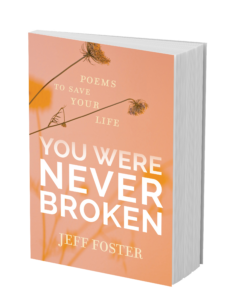
Learn More
Free, 12-part video series of self-acceptance
Access the Self-Acceptance Project free of charge
Self-aggression, self-acceptance, self-love, and issues of self-worth can be challenging for contemporary spiritual practitioners, even for those who have meditated or engaged in psychotherapy for years. There are many ways we can be unkind to ourselves, often subtle and unconscious, which can affect the way we perceive and engage in our lives, especially in interpersonal and intimate relationship.
In this free, 12-week video event series, I invited 23 psychologists, psychotherapists, neuroscientists, and spiritual teachers to speak with my friend and longtime colleague, Tami Simon, to explore these areas and how we might move toward the creation of a certain kind of holding environment in which we can grow, heal, and transform together.
All episodes of the Self-Acceptance Project are now posted and can be accessed as video or audio downloads, or can be streamed at no cost from the comfort of your own home. We invite you to join us for this pioneering series and look forward to sharing our discoveries with you – and hearing what you have learned. It is our intention that you benefit deeply from this work and that it guide you along your own journey of love and awakening.
Episodes include
- Developing Shame Resilience with Dr. Brené Brown
- Waking Up from the Trance of Unworthiness with Dr. Tara Brach
- Turning Towards Our Pain with Dr. Robert Augustus Masters
- Begin Exactly Where You Are with Jeff Foster
- Taking in the Good with Dr. Rick Hanson
- The Human Capacity to Take Perspectives with Dr. Steven Hayes
- What if There is Nothing Wrong with Raphael Cushnir
- No Strangers in the Heart with Mark Nepo
- Transforming Self-Criticism into Self-Compassion with Dr. Kelly McGonigal
- Faith in Our Fundamental Worthiness with Sharon Salzberg
- Developing a Wise Mind with Dr. Erin Olivo
- Embodied Vulnerability and Non-Division with Bruce Tift
- Perfect in Our Imperfection with Colin Tipping
- Staying Loyal to One’s Self with Dr. Judith Blackstone
- Compassion for the Self-Critic with Dr. Kristin Neff
- Curiosity is the Key with Dr. Harville Hendrix
- Kindness is the Means and End with Geneen Roth
- Healing at the Level of the Subconscious Mind with Dr. Friedemann Schaub
- Embracing all of Our Parts with Dr. Jay Earley
- Understanding Empathy and Shame with Karla McLaren
- Integrating the Shadow with Dr. Parker PalmerLetting Life Be in Charge with Cheri Huber

The Freedom to Choose Something Different with Pema Chödrön
Ever feel triggered and stuck in a reactive tailspin despite all your efforts? It is from this place — this hooked feeling — that we find ourselves responding in less than ideal ways. These are the moments when we may speak with venom, act out, or completely shut down when faced with challenging situations.
It is only later, when we’ve had the opportunity to calm down and reflect on our actions, that we wonder where we went wrong and how we could have chosen a more grounded response.
In The Freedom to Choose Something Different, Pema Chödrön examines and illuminates this nebulous process, clearly identifying where and when you have the opportunity to change your habitual response patterns. . . to choose something different. In this eight-part video course, Pema personally walks you through the landscape of these internal thunderstorms and guides you through the tools to cultivate inner freedom.
Discover more in the FREE introduction to the Online Course.
Qigong Ecstasy – with Robert Peng
We’re so happy to be working with qigong master Robert Peng, who is not only an extremely accomplished qigong teacher, but a lovely human being who has truly become part of the Sounds True family.
With Robert, we’ve just released a video teaching program called Qigong Ecstasy, a movement and meditation practice to cultivate radiant happiness.
This 45-minute practice gently activates the three Dantians—the major energy centers of the body—dissolving stagnant energy that impedes the flow of life-giving Qi. Qigong Ecstasy begins with structured movement sequences that generate a strong energetic charge. Robert then transitions you into spontaneous Qigong that lets the energy take over, moving the body with playful and free-flowing expression as you immerse yourself in the abundant Qi of the universe. Finally, he brings you to a place of meditative stillness for grounding, peace, and blissful oneness with the Qi of Heaven, Earth, and your own body.
The result: you awaken within you “a gurgling spring of fresh energy that streams into all your activities.”
We’re thrilled Robert will be joining us again at this year’s Wake Up Festival!
Enjoy this short video from Robert on Qigong Ecstasy:
The Mindfulness-Based Stress Reduction Online Course
Dear friends, we are so happy to announce our partnership with our friends at The University of Massachusetts’ Center for Mindfulness, where we’re working together to offer the first-ever online version of the highly-acclaimed Mindfulness-Based Stress Reduction (MBSR) program.
Learn more about this very special opportunity here.
In 1979, Jon Kabat-Zinn founded the Stress Reduction Clinic at the University of Massachusetts to bring a form of meditation known as mindfulness into the medical mainstream. Mindfulness is a basic human quality, a way of learning to pay attention to whatever is happening in your life that allows you a greater sense of connection to your life inwardly and outwardly. Mindfulness is also a practice, a systematic method aimed at cultivating clarity, insight, and understanding. In the context of your health, mindfulness is a way for you to experientially learn to take better care of yourself by exploring and understanding the interplay of mind and body and mobilizing your own inner resources for coping, growing, and healing.
Nearly three decades of scientific research at medical centers all over the world suggest that training in mindfulness and MBSR can positively and often profoundly affect participants’ ability to reduce medical symptoms and psychological distress while learning to live life more fully.
Since its inception, more than 20,000 people have completed the MBSR training program. They have been referred by more than 5,000 physicians, by hundreds of other health care professionals, and through self-referral. These participants have been strongly motivated to do something for themselves—something no one else can do for them—by learning to draw upon their inner resources and natural capacity for greater health and balance, ease and peace of mind.
The MBSR Online Course is the only complete online training in the MBSR Online Course follows the same, well-respected method taught at the Center for Mindfulness in Medicine, Health Care, and Society at the University of Massachusetts Medical School. This eight-week course offers the curriculum and methodology developed by Jon-Kabat Zinn and is taught by Center for Mindfulness director Dr. Saki Santorelli, and senior instructor Florence Meleo-Meyer.


